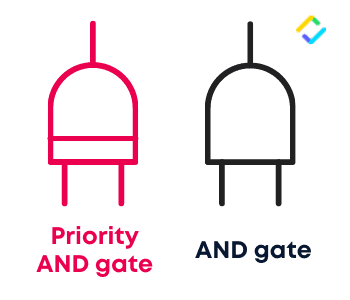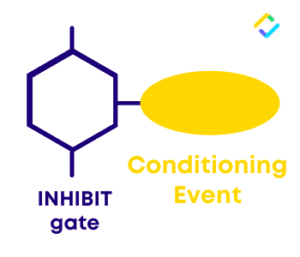What is Fault Tree Analysis?
Fault tree analysis is a top-down approach to problem-solving wherein the starting point of analysis is the undesired event. Events leading to the undesired event are then evaluated based on their relationship with their immediate effect, which is either another event closer to the undesired event or the problem itself.
Fault tree analysis is primarily used in safety and reliability engineering. Though FTA is essential and known in the aerospace industry, any business that aims to assess the vulnerabilities of their system to failure-causing events can use fault tree analysis.
What is a Fault Tree Diagram?
A fault tree diagram is a key feature of FTA and is best used to explain the relationship between events. Though the FTA diagram is not the intended end result or purpose of fault tree analysis, it helps safety and reliability engineers spot and address issues that could lead to multiple undesired events.
How to Do a Fault Tree Analysis
Easily conduct a fault tree analysis with the following steps:
- Define the undesired event.
- Identify the requirements for the undesired event to occur.
What are the essential components of this undesired event? Without these components, the undesired event cannot occur at all. - Decide the relationship between the requirements and the undesired event and use the corresponding fault tree analysis symbols.
Guide Questions:- Do all of them need to be present for the undesired event to occur?
- If yes, is their order relevant to the undesired event occurring?
- If yes, use the Priority AND gate symbol.
- If no, use the AND gate symbol.

- If no, is a specific number of them needed for the undesired event to occur?
- If no, use the OR gate symbol.
- If yes, is the specific number more than 1?
- If no, use the Exclusive OR gate symbol.
- If yes, use the VOTING gate symbol.

- If a requirement only leads to the undesired event under a certain condition, use the INHIBIT gate symbol.

- If yes, is their order relevant to the undesired event occurring?
- Do all of them need to be present for the undesired event to occur?
- Identify the causes of each requirement.
- Decide the relationship between the causes and the requirement.
Follow the same procedure as Step 3, only replace requirements with causes and undesired event with requirement.
Repeat until you reach the root causes or basic events.
Fault Tree Analysis Examples in Detail
Below are detailed examples of implementing fault tree analysis in different industries:
Fault Tree Analysis Example in an Electric Power System
Top event: short-circuit fault
[OR gate connecting top event to 1A and 1B]
- Intermediate event 1A: breakdown of transmission lines
[OR gate connecting 1A to 1A-2A and 1A-2B]- Intermediate event 1A-2A: conductor resistance
- Basic event 1A-2A-3A: rise in conductor temperature
- Intermediate event 1A-2B: corona loss
- Basic event 1A-2B-3A: ionization of air molecules near
the transmission line conductors
- Basic event 1A-2B-3A: ionization of air molecules near
- Intermediate event 1A-2A: conductor resistance
- Intermediate event 1B: transformer failure
- Intermediate event 1B-2A: insulation failure
[INHIBIT gate connecting 1B-2A to 1B-2A-3A and conditioning event]
Conditioning event: fault current passes through transformer- Intermediate event 1B-2A-3A: sufficient insulation deterioration
[OR gate connecting 1B-2A-3A to 1B-2A-3A-4A and 1B-2A-3A-4B]- Intermediate event 1B-2A-3A-4A: thermal aging
- Intermediate event 1B-2A-3A-4A-5A: excessive temperature
- Basic event 1B-2A-3A-4A-5A-6A: transformer overloads
- Intermediate event 1B-2A-3A-4A-5A: excessive temperature
- Intermediate event 1B-2A-3A-4B: mechanical stress
- Basic event 1B-2A-3A-4B-5A: transient power frequency currents
- Intermediate event 1B-2A-3A-4A: thermal aging
- Intermediate event 1B-2A-3A: sufficient insulation deterioration
- Intermediate event 1B-2A: insulation failure
The above fault tree analysis example in a visual format:

Disclaimer: Since the focus of this example is to show a fault tree analysis, other technical elements relating to a short-circuit fault may be incorrect.
Fault Tree Analysis Example in the Construction Industry
To also provide a clearer understanding of how to implement this problem-solving method in another industry, below is a fault tree analysis example in the construction sector, specifically in the process of pouring concrete:
- Main Event: Poor Quality Concrete Pouring
- This is the main event or the top-level failure that we want to analyze and understand its potential causes.
- Primary Causes:
- Insufficient Concrete Mix Design
- Incorrect proportions of concrete ingredients (cement, aggregates, water, admixtures)
- Inaccurate batching or mixing of the concrete
- Contamination of aggregates or cement
- Improper Concrete Placement and Consolidation
-
- Inadequate compaction of the concrete
- Insufficient vibration during concrete placement
- Uneven concrete pouring or leveling
-
- Environmental Factors
- Extreme weather conditions (high or low temperatures, rainfall, wind)
- Improper curing due to environmental factors
- Insufficient Concrete Mix Design
- Secondary Causes:
- Insufficient Concrete Mix Design
- Inadequate testing or analysis of concrete mix design
- Lack of expertise or knowledge in designing appropriate concrete mixes
- Improper Concrete Placement and Consolidation
- Inadequate training or experience of workers in concrete placement and consolidation techniques
- Lack of proper equipment for concrete placement and consolidation (vibrators, screeds, etc.)
- Environmental Factors
- Inadequate weather monitoring or forecasting
- Failure to take necessary precautions based on weather conditions
- Insufficient Concrete Mix Design
- Tertiary Causes:
- Insufficient Concrete Mix Design
- Lack of quality control and quality assurance measures
- Poor communication between design engineers and concrete suppliers
- Improper Concrete Placement and Consolidation
- Inadequate supervision and inspection during concrete pouring
- Lack of adherence to industry standards and best practices
- Environmental Factors
- Inaccurate assessment of the project site’s environmental conditions
- Failure to implement appropriate measures to mitigate the effects of adverse weather conditions
- Insufficient Concrete Mix Design
Application of Fault Tree Analysis
The most critical part of fault tree analysis is the evaluation of the fault tree diagram. Using the diagram as a visual representation of failure paths, safety and reliability engineers can better identify which elements need to be removed or modified to prevent failure.
Beyond simple identification of failure hazards, the gate and event symbols also help safety and reliability engineers strategically plan for how best to attack failure. They are able to know when and where they should add failure control measures and prioritize and allocate resources accordingly.
Another benefit of fault tree analysis is the ability to get Common Cause Failures (CCFs) when comparing the events of multiple fault trees within a single system. CCFs can be described as the highest priority risks to a system’s safety and reliability.
Since these elements are the most likely to cause failure within a system, CCFs should be closely monitored to help prevent them from going further up failure paths and causing overall system failure.
Scale Your Enterprise Operations with Customizable Solutions
✓ Scale ✓ Data ✓ Security ✓ Integration ✓ Teams
Explore nowBuilding Up a Database of Information: SafetyCulture
How do you fix a system if you don’t know the exact problems that need fixing? While most teams already have an idea of the problems they need to solve, some teams may still have difficulty in identifying the problems that are harming their system.
For those who want to ensure that they start their fault trees with the right problems and not waste their time making fault tree diagrams for random issues, consider using SafetyCulture (formerly iAuditor).
Using SafetyCulture, you can see which undesired events have the largest negative impact on your system and spot trends in system failures. You can do the following and more with SafetyCulture:
- Help those on-the-ground gather information with photos and annotations
- Incorporate inspections into your failure information database
- View timelines of failure resolutions using the Actions feature
Book a demo to see how SafetyCulture works, get started for free, or take a look at some of our featured templates for root cause analysis below.



